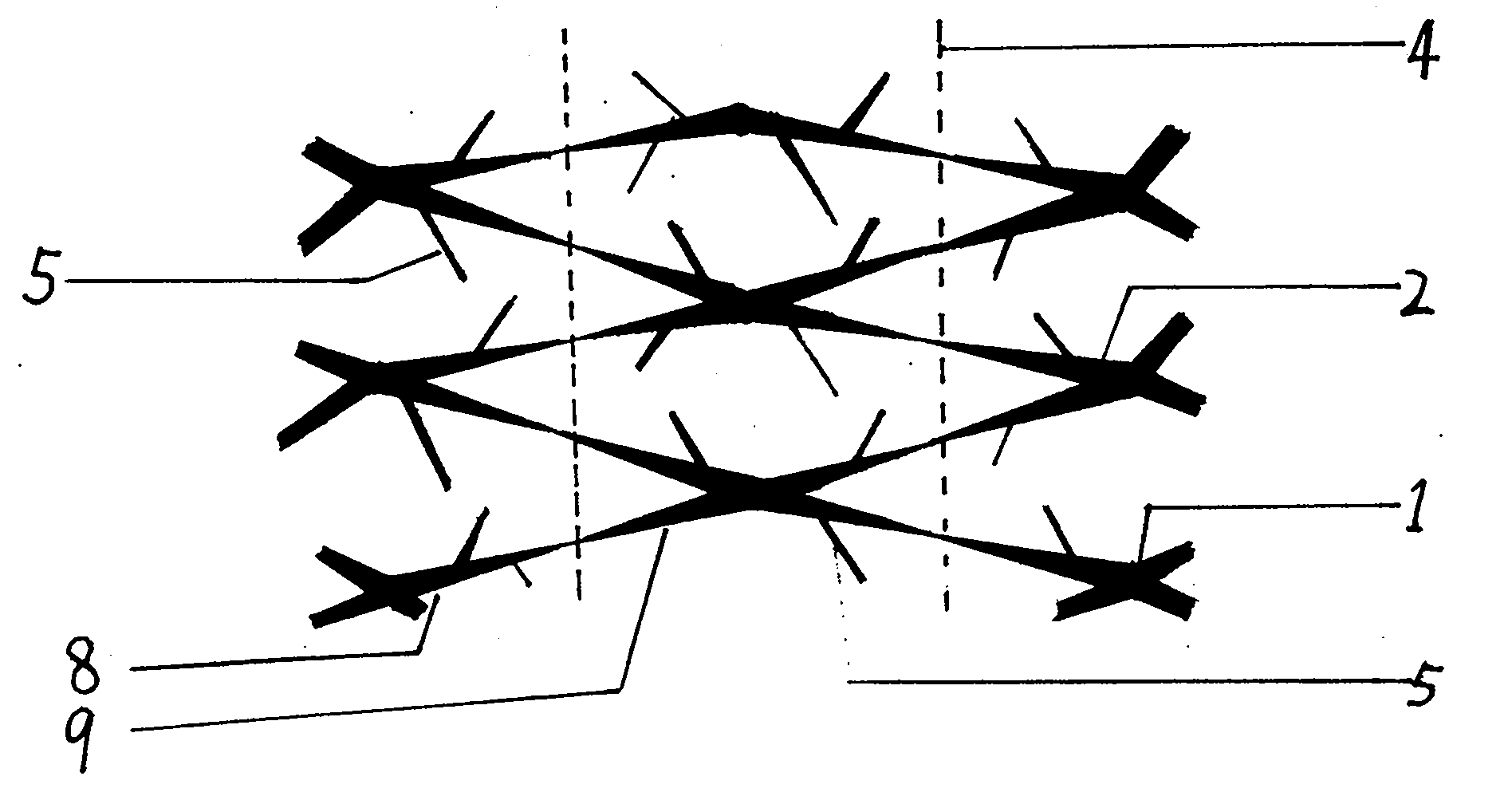Shed erecting-free scaffold self-shaping technology for pears
A pear tree and shed technology, applied in the field of shed shaping, can solve the problems of low space utilization, low light energy interception rate, and low output level, so as to improve space utilization, save shed materials, and expand the light-receiving area Effect
- Summary
- Abstract
- Description
- Claims
- Application Information
AI Technical Summary
Problems solved by technology
Method used
Image
Examples
Embodiment Construction
[0018] Such as figure 1 , figure 2 , image 3 As shown, the pear tree frame-free shed self-frame shaping technology is adopted, and the main branches of the pear trees in the adjacent rows are used to form an arc-shaped structure. is wind damage) ability is enhanced. Owing to utilizing the main branch (2) of the tree body itself to form the scaffolding structure, the high cost of Japanese horizontal scaffolding construction is saved.
[0019] This technology completes the self-strutting of the pear tree through the following five steps:
[0020] 1. Young tree cultivation. Such as Figure 4 In the spring of the year of field planting, the pear seedling trunk (1) is cut to leave a height of 60-80cm, and each pear tree is cultivated with 4 main branches (2), and the main branches (2) maintain mutual growth balance through technical measures. Prune the main branch (2) in the winter of the first year and let it go without cutting it short. Most of the main branches reach th...
PUM
 Login to View More
Login to View More Abstract
Description
Claims
Application Information
 Login to View More
Login to View More - R&D
- Intellectual Property
- Life Sciences
- Materials
- Tech Scout
- Unparalleled Data Quality
- Higher Quality Content
- 60% Fewer Hallucinations
Browse by: Latest US Patents, China's latest patents, Technical Efficacy Thesaurus, Application Domain, Technology Topic, Popular Technical Reports.
© 2025 PatSnap. All rights reserved.Legal|Privacy policy|Modern Slavery Act Transparency Statement|Sitemap|About US| Contact US: help@patsnap.com



